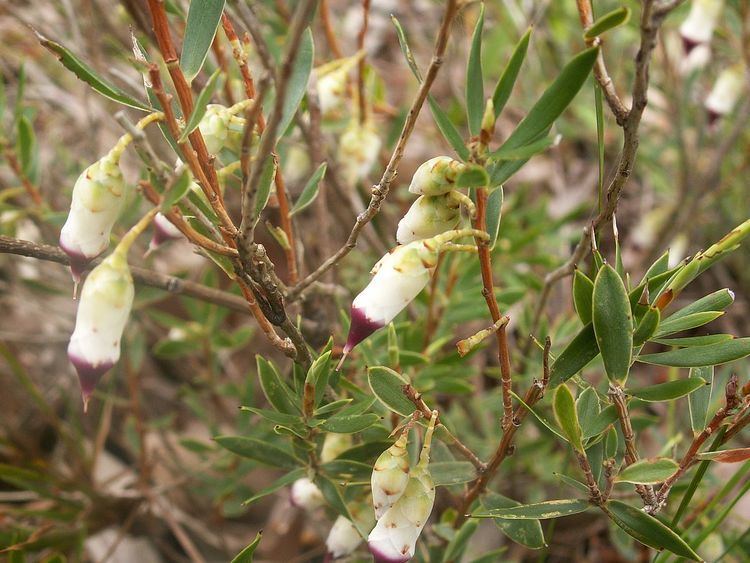Rank Genus | ||
 | ||
People also search for Didonica, Mycerinus, Rusbya, Polyclita | ||
Conostephium is a genus of flowering plants in the heath or heather family Ericaceae. The name of the genus comes from Greek words, conos, "cone" and stephanos, "that which encircles a crown or wreath".
Contents
Description
The plants in the genus Conostephium are small evergreen shrubs with small to medium-sized simple leaves. The flowers occur singly in the axils of the leaves, have 5 sepals, 5 corolla lobes ("petals") which are united at their base into a long corolla tube, and 5 stamens. The fruit is a more or less fleshy drupe.
Taxonomy
There are 12 species in the genus, 4 having been added recently. The most distinctive features of the genus are the corolla tube which is conical in the upper half, the tiny corolla lobes and very long anthers which are fully enclosed within the corolla tube. These 3 features are thought to be adaptations to buzz pollination. The genus is most closely related to Brachyloma and Stenanthera but those genera have saccate corolla tubes, much large corolla lobes and shorter anthers which extend partially beyond the corolla tube.
C. pendulum was the first species of Conostephium to be described (by Bentham in 1837). Then, within ten years, two more were added - (C. minus and C. preissii). In 1859, the Russian botanist Sergej Sergeevitch Stscheglejew described a new genus, Conostephiopsis in which he placed a new species (Conostephiopsis drummondii). At the same time, he transferred C. minus and C. preissii to the new genus, making Conostephium once more monotypic. In 1886, Bentham in Flora Australiensis grouped the two genera and added a fourth species (Conostephium roei). Much later, C. marchantiorum Strid (1986), C. uncinatum Moezel (1987) and C. magnum Cranfield (2002) were added. The latest additions were made (in 2013) by Michael Hislop, a botanical taxonomist at the Western Australian Herbarium
Species
Distribution
All Conospermum species are endemic in the south-western part of Western Australia.
